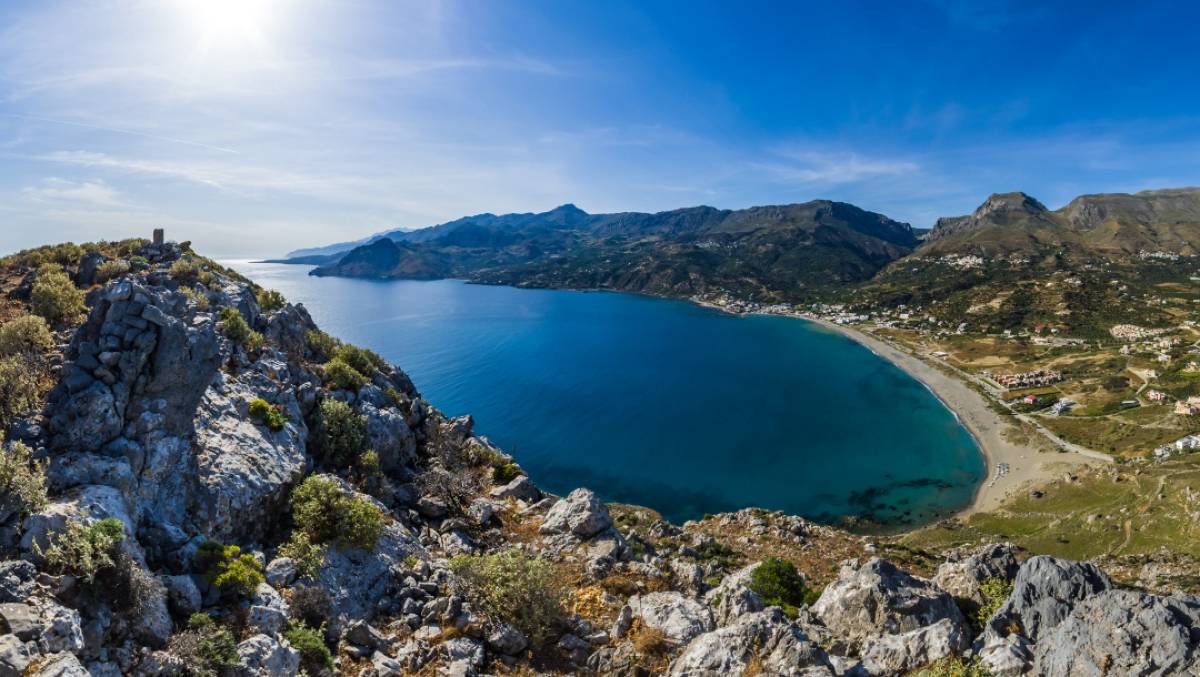
Crete is an extremely mountainous island with four main mountain ranges, the White Mountains in the west, Psiloritis in the center, Dikty and Sitia Mountains in the east. During the winter, Crete receives large volumes of snow which, in some cold years, melts in May. In the past, it seems, some of the mountains were covered with snow all year round and cool water flowed in the springs in the summer.
The White Mountains have 58 peaks with an altitude of over 2000 meters. 18 of them form a plateau at 1800 to 2100 meters. In the Mile chasm on the northern side of the mountain range and at an altitude of 1800 meters the snow does not melt as the sun never sees it. The mountain range receives very high annual rainfall and snow. The limestone formations within the mountains do not allow movement within their mass and so the water from the melting snow is protected from surface water and all kinds of contamination. The low counts of NO2 and NO3 show that the aquifer is unaffected by human interventions as the mountains with their innumerable ravines, caves and ravines are not easily accessible.
Psiloritis, with its highest peak, Timios Stavros, at 2456 meters, is a huge massif that stores huge amounts of water. The feeding basin inside is quite large. Water through underground rivers reaches many areas around the mountains, such as the Lake Votomos in Zaros, the Dam of Faneromeni and the springs of Almyros River in Heraklion. The water springs have excellent flow stability and are formed by carbonate rocks. According to geologists, thousands of years ago, the subsoil in the area of Gergeri was swamped with special light rock (white gravel) which acts as a unique natural cleaning filter in the world.
Dikty is the southernmost massif of Greece that exceeds 2,000 meters with the highest peak being Spathi, at 2141 meters. In Dikti, there are the springs for streams/rivers such as Aposelemis. In 2018, an underground tunnel of 3.5 kilometers with a gradient of 15% was built to transport the waters from the Lasithi plateau, the mountain's drainage site, to the Aposelemis dam. The dam covers the water needs of over 250,000 people in Heraklion and Agios Nikolaos. The water of the Kryos river fills the Bramian dam near Ierapetra and the Anapodaris river crosses the fertile valley of Embaros.
The Sitia Mountains are the lowest mountain range in Crete with the highest peak, Plagia at 817 meters. In the Sitia Mountains, the springs are created with the contact of water permeable limestones with impermeable metamorphic rocks. The water moves inside the caves of the mountains and exits at the spring. The spring waters supply the entire surrounding area while they also maintain important ecosystems.
The cavernous formations, the large feeding basins and the unique subsoil ensure drinking water excellent in smell, appearance, taste and texture. The natural mineral water in Crete is bottled at its springs with the most modern specifications. Through networks of stainless-steel pipes, it is led to state-of-the-art machines without any processing. The fully equipped microbiological laboratories and specialized staff ensure its quality. It is easily digestible, clear and light and meets all requirements in terms of quality and hygiene.
(More articles about Crete on www.gomega.gr)